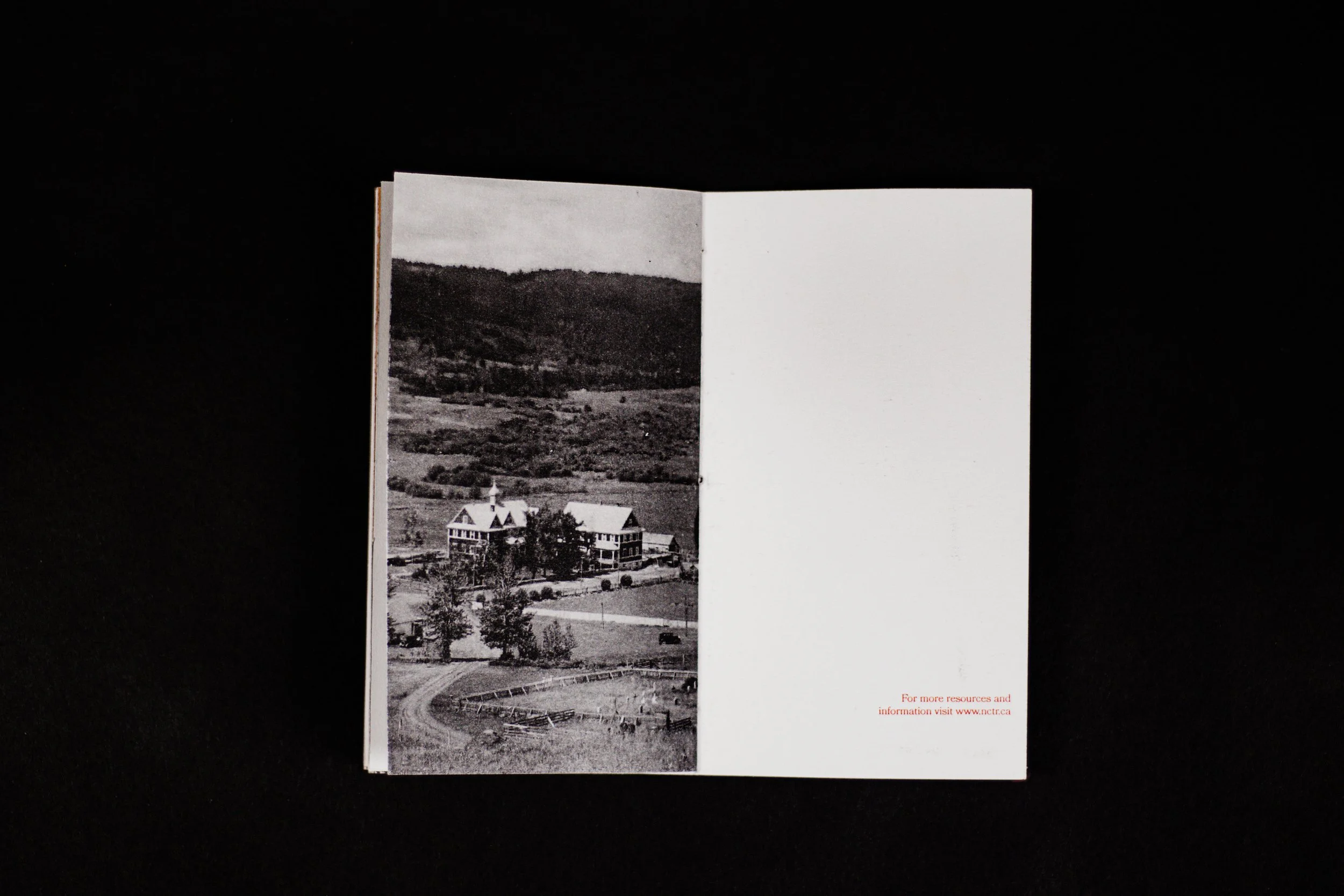
EDITORIAL DESIGN / INFORMATION DESIGN
FROZEN CHILD
2024 Graphis New Talent Award,
Honourable Mention
2023 RGD #HeyRGD Winner,
Social Good Scholarship
2023 DesCan Salazar Awards Winner,
Print Design
2023 Applied Arts Awards Winner,
Editorial Design Entire Book/Magazine
2023 RGD Student Awards,
Honourable Mention for Storytelling
2023 RGD Student Awards,
Honourable Mention for Strategic Design
2023 DesCan Jim Rimmer Awards,
Honourable Mention
2024 World Brand Design Society,
Feature Article
ACCOLADES
The Frozen Child, known as "alt skwimémelt" in Secwepemc, recounts the tragic tale of Duncan Sticks, an eight-year-old boy who dies while attempting to flee from William's Lake Residential School.
The "alt skwimémelt" booklet aims to highlight the individual stories of people impacted by residential schools, rather than lumping their experiences together as a single, horrific narrative. By doing so, the booklet aims to evoke deeper emotions and raise awareness of the horrors that took place at William's Lake Residential School all while continuing Duncan Sticks' story. Ultimately, the goal is to spark conversations about the steps and actions we can take to support those impacted by the lasting effects of residential schools.
Readers are first confronted with the book's concept when they encounter a thin orange string binding it together, forcing them to seek out information through nontraditional means.
After passing the vellum cover, readers are presented with an English translation of the book, and the beginning of the horrors that took place at Williams Lake Residential School.
The Frozen Child features two distinct narratives.
The first, presented in the main pages, details the harrowing tale of Duncan Sticks and his quest for freedom. However, as readers delve deeper into the book, they discover a completely different story hidden within its French folds. This secondary story delves into various statistics and accounts of events that occurred within the school over the years. These include shocking stories of child pregnancy, mass suicide attempts, and numerous other tragedies.




















The booklet emits a palpable sense of discomfort, evoked by the charcoal illustrations, jagged pull quotes, and hand-rendered orange comments. These orange quotes, which appear throughout the book, heighten the sense of unease and give voice to Duncan's own thoughts as if he were sharing his truth within its pages.
Located in the center of the booklet, a smaller book features direct quotes taken from the inquest investigation that was conducted in response to Duncan's tragic death.
To continue supporting Indigenous communities in Canada, it is important to keep learning about Indigenous history and the communities in your area. For additional resources and information on truth and reconciliation, please visit www.nctr.ca.













